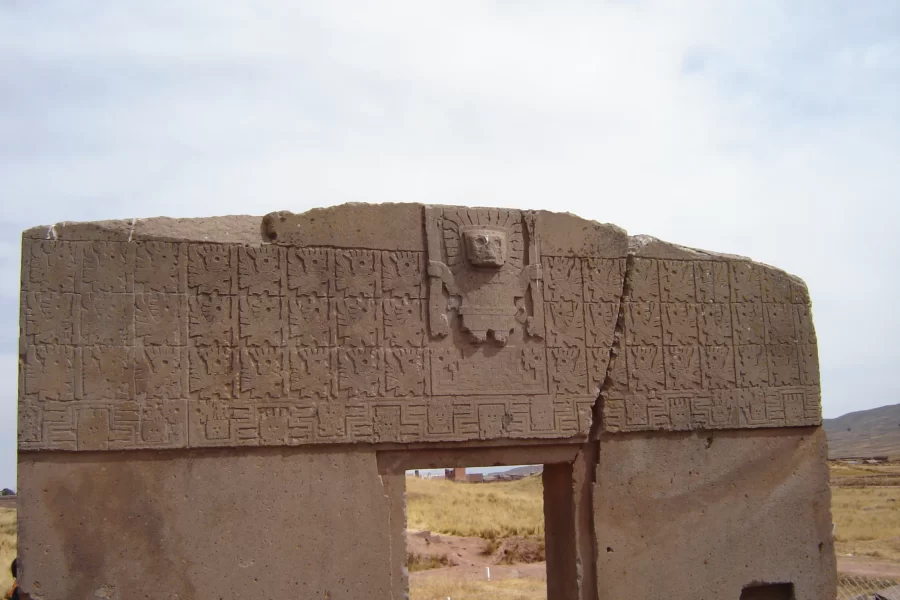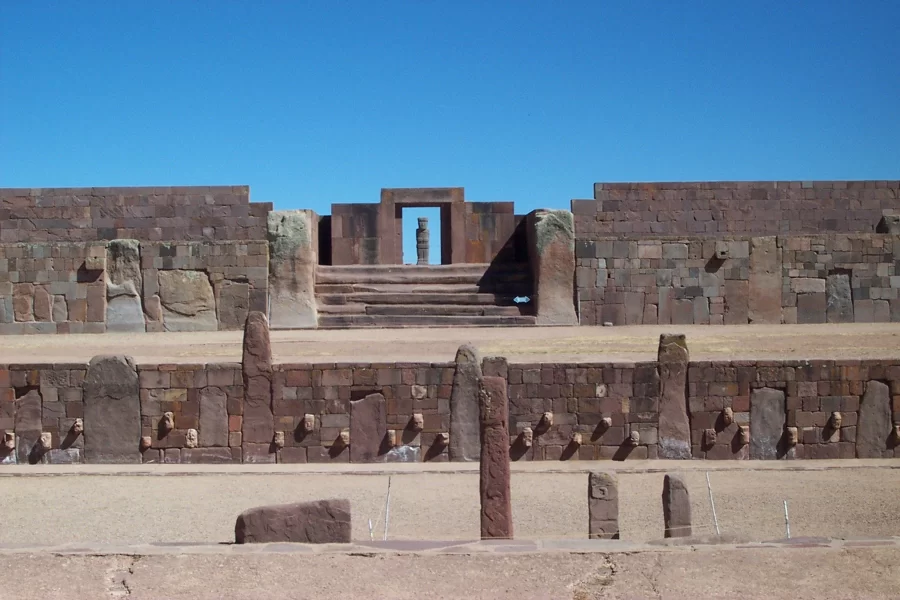
The Sun Gate is one of the greatest monuments of the Tiahuanaco culture, in other words it is like the icon that identifies this civilization. Several researchers claim that this has several mysteries and is currently one of the most important archaeological remains of Tiahuanaco.
Table of Contents
The Gate of the Sun was discovered by Pedro Cieza de Leon in 1549, when explorers found it horizontally on the ground and with a large crack that can still be seen today. In the upper part of the Portal you can see some 48 carved with wings in its three rows.
And in the central figure it is believed that they are representing the God Viracocha or called the Deity of the staffs or the sticks, also the carvings that are seen in this monument could have an astronomical and/or astrological meaning with a calendar purpose.
This image is also seen in his face some carved tears type, so it is called as the “God who cries”. On the other hand, the Portal gave the entrance to the sacred precinct of Kalasasaya, as researchers indicate, this piece was carved in a single piece of stone and it is suspected that this was not its original site, as we see it today, this data remains uncertain for scholars.
The portal is 3 meters high and 4 meters wide, with an approximate weight of 10 tons, the opening of the door is 1.4 meters wide.
On the shores of Lake Titicaca was born one of the great cultures that could even be considered as the mother culture of pre-Hispanic civilizations, this culture dominated the territories of what are now Peru, Chile, Argentina and Bolivia for many centuries.
As we said, the capital was called Tiwanaku, between the border of Peru and Bolivia; for their agriculture they had swampy soils and were seasonally flooded by the thawing of Quelccaya.
Then to improve their agriculture they developed an amazing agricultural technology that allowed them to plant their products, this technique consisted of building high platforms of grass and elevated field so that the water did not reach their crops, in addition they were separated by canals, in their way they built large aqueducts around the city of Lukumarka and Pajchiri.
Therefore, it could be said that the culture was very good in agriculture and cattle raising, because they had a great challenge, to know the secrets of sowing in a high area. Regarding the social and political organization, they were divided into three classes: the elite, the artisans and the commoners or peasants.
Researchers say that they were polytheists because they worshiped many gods and one of the main ones was the god Wiracocha. According to the myths they say that this god created man from a rock and gave them life, he also created giant men to move the stones of the great architectures that we see today, but as the giants revealed themselves to their god, he decided to exterminate them.
Among its architecture highlights the dolmens or rectangular stone constructions that were built in order to inhabit them, you will also find the famous Chullpas that had funerary purposes, made of mud and stone well carved that took a cylindrical shape.
The most important remains are found in the terraces of Pumamarka, the fortress of akapana and the Palace of Kalasasaya, it is there where the Portada del sol was also found.


